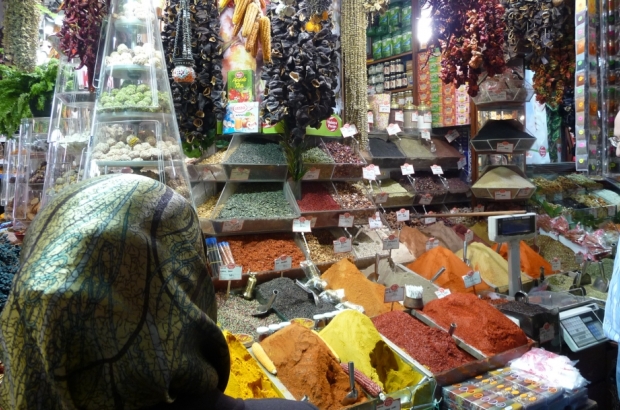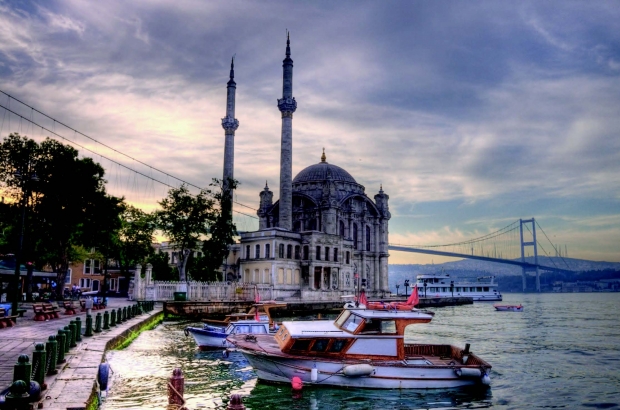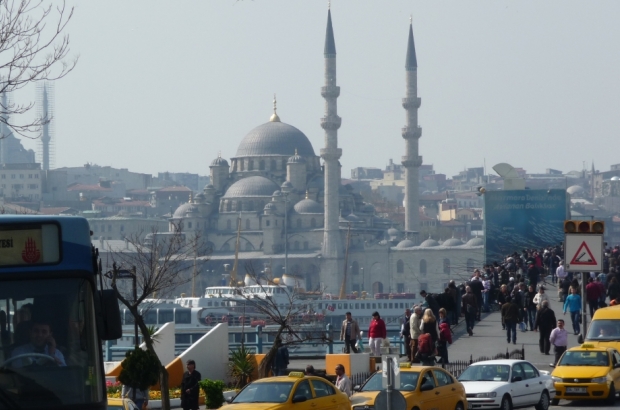- Daily & Weekly newsletters
- Buy & download The Bulletin
- Comment on our articles
Sailing to Byzantium: a trip to the shores of Istanbul
Over the centuries Istanbul has been influenced both by Christianity and Islam as its rulers changed. Originally known as Byzantium, the city switched its name to Constantinople, when it became the capital of the Roman Empire. In 1453, the city was absorbed into the Ottoman Empire; its name was changed officially to Istanbul in 1930 following the establishment of modern Turkey.
If you want to get a sense of the city’s colourful history, head straight to the imposing Hagia Sophia, or Holy Wisdom, which dates back to the 6th century. Built as a church, it later became a mosque and in today’s secular Turkey is a museum housing Christian and Islamic marvels. Inside the architectural wonder rises a breathtaking central dome some 56 metres high. Surrounding it are smaller domes, alcoves and galleries adorned with Islamic scripts, motifs and tiles as well as Christian mosaics in brilliant gold, blue and red depicting Biblical figures that were hidden from view while the building was used as a mosque.
Opposite the Hagia Sophia, across a grass square that once boasted a hippodrome for chariot racing, is the Blue Mosque. Equally deserving of a visit, it is open to the public outside of prayer times. Be warned: there is an overwhelming stench of smelly feet on entering, as everyone must remove their shoes before going in. Still, this is a minor price to pay to see the stunning interior filled with gorgeous blue tiles, marble walls and stained-glass windows.
Both sights are on Istanbul’s European side, in Sultanahmet, the southern part of the city. Dutch writer Geert Mak describes the area in his 2008 travelogue The Bridge as ‘the conservative, Eastward-looking shore’. This district is in contrast with that to the north, which, Mak writes, “is permeated with the mentality of the West and the lightness of modern life”. The two areas are connected by Galata Bridge, where fishermen, merchants and tourists gather daily. According to Mak, the bridge’s way of life represents a microcosm both of the city and Turkey.
On the southern side of Galata Bridge is the noisy, crowded spice market where dried chillies hang from the stalls’ rafters and the counters are piled high with cardamom, almonds and every sort of curry powder and spice imaginable. Down nearby steep and winding streets are stores selling plastic buckets and drying racks that spill out onto the pavement and shop windows displaying cheap wedding dresses. To the north sprawls the burgeoning district of Beyoglu, where small art galleries are springing up daily in narrow side streets and where the shops tend more towards upmarket ceramics and local designer labels.
Istanbul’s many facets make it an invigorating city filled with the hubbub that comes with a place that is home to more than 10 million people. And yet it’s also a city which affords relaxation. To wind down, treat yourself to a scrub and massage in a hammam or amble along the waterfront and watch the ships come in. In this metropolis, water is never far away, be it the inlet of the Golden Horn or the Bosphorus Strait, creating a sense of unexpected space and spectacular views. Thanks to Emperor Constantine establishing his New Rome on the seven hills of ancient Byzantium, there are impressive lookouts from the top of most streets. For truly panoramic views, Galata Tower or the bar and restaurant at the top of Misir Apartmani art galleries, both in Beyoglu, are the places to go.
Of course the ultimate way to enjoy this city of contrasts is to indulge in one of the favourite pastimes of the Istanbulites themselves, a boat trip along the Bosphorus – an experience the Turkish author Orhan Pamuk describes in his book Istanbul: Memories of a City as: “To be travelling through the middle of a city as great, historic and forlorn as Istanbul, and yet to feel the freedom of the open sea – that is the thrill of a trip along the Bosphorus.”
Where to eat
One advantage of visiting a city with a local friend is being taken to their favourite places to eat and drink. Thanks to my friend Seda, that is exactly what I was able to enjoy. Here’s a taster of some of the best.
Turkish cuisine
Antiochia offers specialities from the area around Antakya, a Turkish town close to the Syrian border from which the restaurant takes its name. The highlight was the mezze which included walnut paste, aubergine salad and pomegranate marinade, all made from the freshest of ingredients and whose flavours were mouthwatering. Beyoglu district. 21 Minare Sokak, Asmali Mesict.
Fish restaurant Doga Balik offers fantastic views out over the city’s hills, dotted at night with lights from apartments and mosques. Select the fish you’d like to eat from a display cabinet and let the chef know whether you’d prefer it grilled, baked or fried. To be accompanied by a glass or two of raki. Cihangir district. 46 Akarsu Yokusu.
Meshur Sultanahmet Koftecisi is famous for its meatballs. Other specialities to be sampled are the white bean and tomato salads. Wash it all down with a glass of ayran, a salty yoghurt drink. For dessert, I recommend the semolina helva sprinkled with pine nuts. Sultanahmet district, opposite the Blue Mosque. 12 Divanyolu Cad.
Western-style cuisine
Within Istanbul’s modern art museum is the Istanbul Modern Cafe. On the waterfront with views of the Bosphorus from both indoor and outdoor seating, the café’s setting is enchanting. Some of the dishes are dubbed ‘Turkish style’, but the emphasis is on pasta, risotto and other western dishes. Beyoglu district. Istanbul Museum of Modern Art, Meclis-i Mebusan Cad., Liman Isletmeleri Sahasi, Antrepo 4, Karaköy.
The House Café is a chic Turkish chain serving all types of coffee, tea and cocktails. Its waterfront café at Ortaköy is a particularly lovely spot, with the large terrace jutting out into the Bosphorus. There’s also a food menu, described as ‘international with a local touch’. Among its tempting desserts is Nostalgic Mosaic cake, a hit with Turks who recall baking this as children, and rice pudding with pomegranate. Across Istanbul, including at Ortaköy waterfront.
Otto Santral stands in the green grounds of Santralistanbul, an Ottoman power station converted into an energy museum and a contemporary art space. The menu is western – as are the prices - with a wide choice of pizzas in particular. Santralistanbul in the north, best reached by shuttle bus from Taksim Square. Eski Silahtaraga Elektrik Santrali, 1 Kazim Karabekir Cad., Eyup.
Turkish Airlines operates regular direct flights from Brussels Airport to Istanbul; www.turkishairlines.com. Jetairfly runs regular direct flights from Brussels-South Charleroi Airport to Istanbul; www.jetairfly.com






















